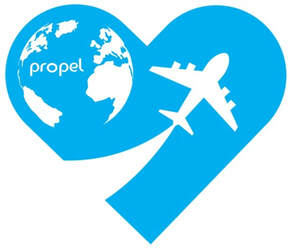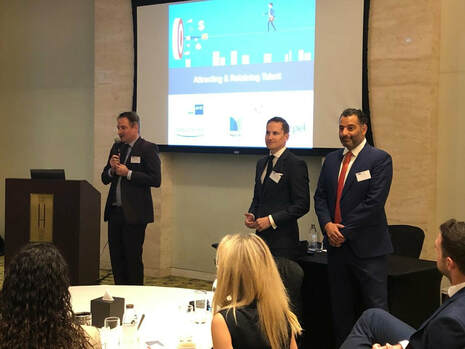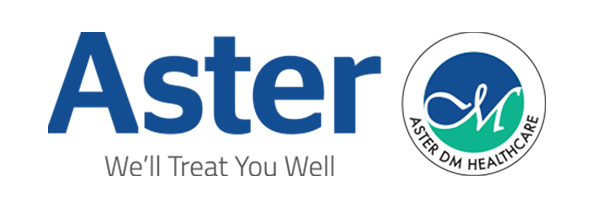WELCOME NOTE
THE HUMAN ELEMENT
Many of us associate Valentine’s Day and the month of February with love and affection. A time to show appreciation to friends, family and significant others, it also reminds us of the importance of care, psychological safety and appreciation in the workplace. In this edition of the Propel newsletter, we focus on global trends, insights and client success stories which highlight the various ways HR and business leaders can create a culture of kindness and care through talent management practices. In the age of digital ‘quick fix’ talent solutions, we must keep the human element at the heart of what we do.
PROPEL AROUND THE WORLD
A PULSE ON OUR CLIENTS
|
In Propel UK, we are seeing our clients increasingly taking a strengths-based approach to development. This being the case, Propel’s new partnership with Strengthscope® is a great addition to our current toolkit. Their Strengthscope® self-report tool helps individuals identify their top 7 strengths, which they can use as the basis for ongoing development. The tool will be integrated into our system in the next few months so our clients will be able to launch this assessment through their existing talent portals.
There has been an uptick in interest from Propel Spain clients for more objective high- potential identification solutions. Business and HR leaders are reaching out to learn more about how Propel combines psychology with technology to design assessment centres that evaluate talent potential in a way that is reliable, robust and data-driven.
|
Our Propel New Zealand team continues to partner with clients who are making investments in the capability of their leaders. Through Management Development Programmes, line managers are better equipped to support the development and performance of their direct reports, creating a positive ripple effect that adds value across all levels.
And finally, in Propel UAE and Gulf region we are noticing a shift toward hybrid assessment techniques with the purpose of creating immersive and engaging assessment experiences for candidates and colleagues alike. Through purposeful assessment process design, and the use of best-in-class psychometric tools, we are delighted to see our clients’ success in attracting, selecting and developing their people.
And finally, in Propel UAE and Gulf region we are noticing a shift toward hybrid assessment techniques with the purpose of creating immersive and engaging assessment experiences for candidates and colleagues alike. Through purposeful assessment process design, and the use of best-in-class psychometric tools, we are delighted to see our clients’ success in attracting, selecting and developing their people.
TALENT TRENDS
EMPLOYEE ENGAGEMENT: WILL YOU STAY MINE?
One of the top stories from last month’s World Economic Forum in Davos was around the measure of GDP: Can it in fact assess the health of an economy when societal well-being – the welfare of the very people producing its goods and services – is not even considered?
In the mini-ecosystem of an organisation, we find a similar parallel happening between employee and employer. More than ever, people want to know how their individual and collective well-being is being measured and discussed at the highest level. Amidst revenue targets and profit margins, cash collection and business development goals, who is protecting the employee’s happiness, work-life balance, satisfaction, development…and the list goes on and on.
Many companies today do in fact measure employee engagement, but is that enough to spark a love affair between the two? According to regular workplace commentator and Financial Times columnist, Pilita Clark:
In the mini-ecosystem of an organisation, we find a similar parallel happening between employee and employer. More than ever, people want to know how their individual and collective well-being is being measured and discussed at the highest level. Amidst revenue targets and profit margins, cash collection and business development goals, who is protecting the employee’s happiness, work-life balance, satisfaction, development…and the list goes on and on.
Many companies today do in fact measure employee engagement, but is that enough to spark a love affair between the two? According to regular workplace commentator and Financial Times columnist, Pilita Clark:
“It seems far too many companies think that doing the odd staff survey is enough to tick the engagement box when what really matters is following through and taking steps to make people happier and more productive. Put another way, a company can do as many surveys as it likes, but if it annoys workers with doltish managers and idiotic dress codes or petty rules on attendance and so on, it should be expected to be treated in kind.” |
It comes as no surprise to hear that employees want more than just words, they want to see action. They want engagement surveys; to be asked: “will you stay mine?” But only if there is a commitment to make changes based on the collective voice. Otherwise, what’s love got to do with it when promises can be broken?
PROPEL EVENTS
METLIFE CARES TO LISTEN
|
On 7th February, Propel partnered with the German Emirati Joint Council for Industry and Commerce (AHK), Australian Business Council Dubai (ABCD) and SCHLÜTER GRAF Legal Consultants to host a breakfast event focused on ‘Attracting & Retaining Talent’.
The objective was to share insights and experiences between HR and business leaders, and to explore why less than 20% of companies believe they are successful in recruiting highly talented people. Moreover, of that 20%, less than 10% think they can keep them. As the main guest speaker, Lauren Davey, EMEA Regional Head of Talent & Development at MetLife, gave an inside into what one of the world’s largest insurance companies – with 50,000 employees across 60 countries – is doing to recruit and retain top talent: |
“We listen to our people. MetLife is seeing significant benefits in using a range of listening mechanisms to get real-time feedback from employees…these include exit interviews at all levels, global “My Voice” listening campaigns and focus groups, and global “My Voice” annual employee engagement surveys.”
But it doesn’t stop at this; Lauren went on to emphasise that employee input must then be put into action in order for engagement and retention to be positively impacted:
Lauren Davey
|
“All employees are focused on continuous improvement and accountability, and are proud to work for MetLife, but they consider resources, time for learning, and collaboration as constrained. Our challenge is to ensure we provide talent solutions for everyone, where people have room to grow. We see everyone as talent, everyone has potential, and we need to find ways to unlock this for all levels." Propel believes in the benefits of partnership; if you are an organisation looking to jointly host a talent management event, reach out to us through LinkedIn for more details.
|
THE VALUE OF PROPEL
A HEALTHCARE CONGLOMERATE'S COMMITMENT TO EMPLOYEE DEVELOPMENT
When Aster DM Healthcare – a performance-driven healthcare enterprise spread across 323 establishments in 9 countries – desired a cost-effective, pragmatic talent development approach to demonstrate to its employees their commitment to action on employee feedback, they turned to Propel.
“Partnering with Propel allowed us to gain valuable development insight into our people, demonstrating to them our investment in their future and professional growth, whilst providing the organisation with crucial talent metrics we could use to make informed, objective and ultimately fair decisions involving our most important asset: our people.” |
The project involved conducting psychometric assessments for around 400 of Aster’s workforce; the design also included a series of Propel-designed Development Centres. Aster’s employees had the opportunity to practice leadership behaviours and approaches in a neutral environment, interacting with Propel business psychologists who provided impartial and unbiased observations around individual strengths and development areas. Subsequent Development Reports provided participants with a road map for their professional growth in the organisation, highlighting specific areas on which each employee should focus in line with career aspirations.
For Aster, leaders were equipped to make talent decisions based on objective evidence and valid behavioural and psychometric evaluation, creating an environment of fairness and transparency. Furthermore, the subsequent talent metrics and aggregate analysis allowed the organisation to identify critical developmental themes at the business unit level, enabling a more holistic business talent strategy to be designed catered towards what the Aster workforce really needed to be their best selves.
For Aster, leaders were equipped to make talent decisions based on objective evidence and valid behavioural and psychometric evaluation, creating an environment of fairness and transparency. Furthermore, the subsequent talent metrics and aggregate analysis allowed the organisation to identify critical developmental themes at the business unit level, enabling a more holistic business talent strategy to be designed catered towards what the Aster workforce really needed to be their best selves.
IN THE SPOTLIGHT
|
MEET A PROPELLER
Lisa Emami
|
Why are you passionate about Propel? |
What do you believe is the biggest challenge in talent management today?
I think that businesses will be challenged to not only respond to, but even compete with, the rise of the gig and platform economy; this has significant implications in the talent management sphere. As more and more workers seek alternative, non-standard forms of employment – hungry for greater flexibility, freedom and diversity in work – and as “on-demand” platforms continue to dominate, enabling these independent “freelancers” to more easily and directly connect to opportunities, I see two areas in particular that will require transformation: first, how we sift through, assess and select a higher volume of “service providers” on a more frequent basis. The accelerated churn resulting from workers jumping from gig to gig will demand that “service consumers” strengthen how quickly and efficiently they can procure skills. And secondly, how we engage the new workforce will require more attention in order to keep pulse with their ever-changing and unique motivations, values and work patterns.
What is your advice when it comes to talent assessment and development?
My advice is to leverage the voice of your current workforce to create an assessment or development experience that speaks to your company’s DNA. In talent acquisition, for example, this may mean bringing successful new hires into the ideation or design phase of your recruitment programme to get their recent experience with your process as well as with other assessment experiences they had gone through during their job hunt prior to joining your organisation. It also means bringing leaders from the business to act, not as “clients” of HR services, but as true co-partners in the formulation of the talent identification and selection approach. When you can get it right at the doorstep of your organisation, at the earliest stages of the employee lifecycle, you are setting the business and the candidate up for success.
Contact Us:
|
|











